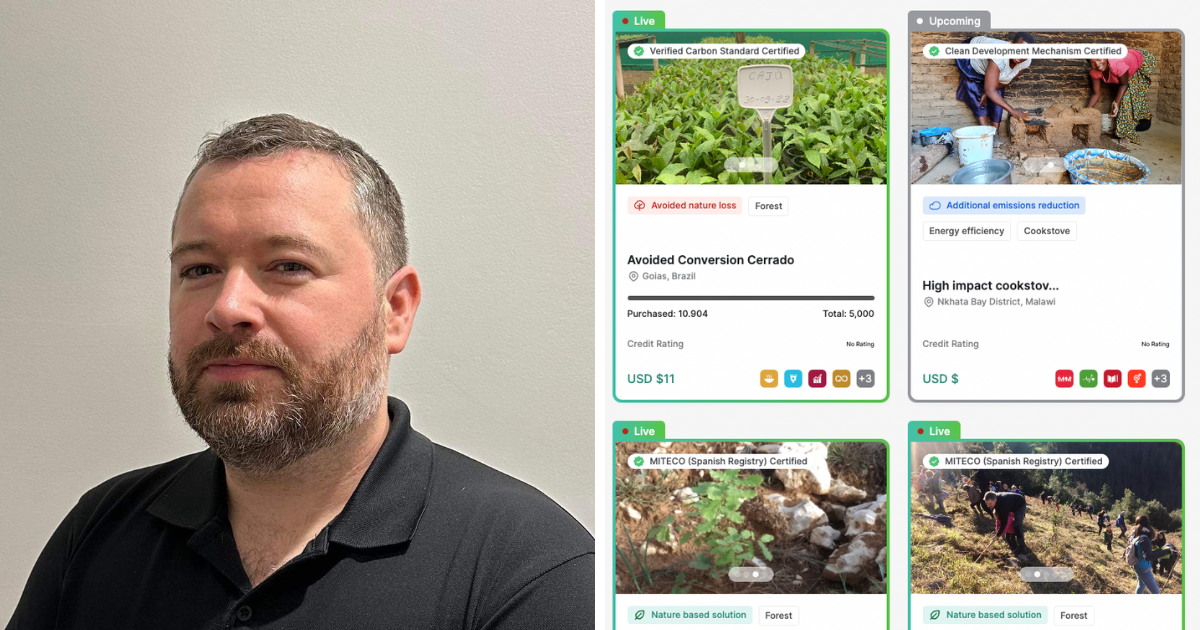In the push for Net Zero by 2050 – a global vision to bring greenhouse gas emissions as low as possible – carbon markets have emerged as an important catalyst.
Today, companies and individuals can purchase carbon credits to offset their emissions. Each credit represents one tonne of carbon dioxide removed from the atmosphere by a dedicated organisation – for example, a renewable energy or reforestation project.
With the launch of its investing platform in May, climate tech company URECA is making carbon credits more accessible for both retail investors and corporations.
“Investing in carbon credits is about more than just diversifying a portfolio – it’s a chance to make a positive impact on the world,” says URECA Chief Financial Officer Tom Carr. “Buying carbon credits translates into direct support for renewable energy, sustainability and decarbonisation initiatives.”
Quality control
To date, faulty credits have been one of the primary obstacles faced by the carbon credit industry.
Earlier in January, an investigation by The Guardian revealed that 90 per cent of carbon credits certified by Verra – the world’s leading carbon certification standard – didn’t represent a real reduction in emissions. At the time, Verra’s credits were being used by companies including Disney and Gucci as part of their offsetting initiatives.
Although Verra disputed these claims, the investigation has since prompted industry players to take a closer look at making carbon credits more reliable. To this end, URECA makes use of blockchain technology to ensure transparency on its platform.
URECA works directly with accredited project developers while also developing its own offset measuring, reporting, and verification (MRV) solutions.
“One of these solutions is aimed at assisting households transition to cleaner energy sources. The technology we’re working on will provide remote verification of carbon offsets, whether it’s a homeowner with a rooftop solar panel or a company operating a large-scale renewable farm.”
Breaking down barriers to entry
With its solutions, URECA is opening up the carbon markets for individuals and companies on both sides of the equation. While investors benefit from URECA’s marketplace, small producers and households can implement MRV solutions and gain income by generating their own carbon credits.
In 2022, URECA began debuting this technology in low-income areas of Ulaanbaatar, Mongolia, as part of its coal-to-solar project. Households were incentivised to make the switch to renewable energy, with each participant helping stop as much as 20 tonnes of coal from being burnt every year.
While there was some initial scepticism – which is common with any new technology – locals soon became receptive after learning the benefits of URECA’s MRV systems.
“They understand that these changes don’t just make economic sense, but can also improve their day-to-day lives and the environment. It’s been incredibly rewarding to see that shift in perspective.”
Is it the right time to invest?
In Singapore, carbon tax rates are set to increase from 2024 through till 2030. Companies will be allowed to offset up to five per cent of their taxable emissions using carbon credits.
As other countries begin introducing such measures as well, the demand for carbon credits is likely to increase in the coming years.
Although it’s still in its beta stage, URECA’s marketplace is already seeing interest from retail investors.
“People seem to appreciate the transparency we aim to provide about the carbon credits they’re investing in. It’s important for them to feel confident about their contributions to combating climate change,” says Carr.
Given that it’s still early days, it’s tough to gauge the financial risks and rewards associated with carbon credits.
“The carbon credit market is constantly evolving, so it’s tough to predict any specific returns,” Carr says. “Several factors can influence an investment’s outcome, like shifts in market dynamics or how a particular project performs.”
That being said, URECA’s advocacy for carbon credit investment has little to do with financial gain.
What’s next for URECA?
In the near future, URECA has plans to continue expanding in Southeast Asia. The company sees a growing interest in sustainable practices within the region and aims to play a bigger role in fuelling this effort.
Through partnerships such as the one with The Asia Foundation – whom URECA worked with in Mongolia on the coal-to-solar project – the company is able to gain valuable on-the-ground insights about the needs of local communities.
The Net Zero vision will require stakeholders from different regions to work together, and this is a key part of URECA’s vision for the future.
“We know that the Net Zero by 2050 goal is an ambitious one, but we believe that our technology and platform can help contribute to the collective effort needed to accelerate this transition.”
Featured Image Credit: URECA
Also ReadHow blockchain technology is playing a role in Singapore’s climate change efforts


